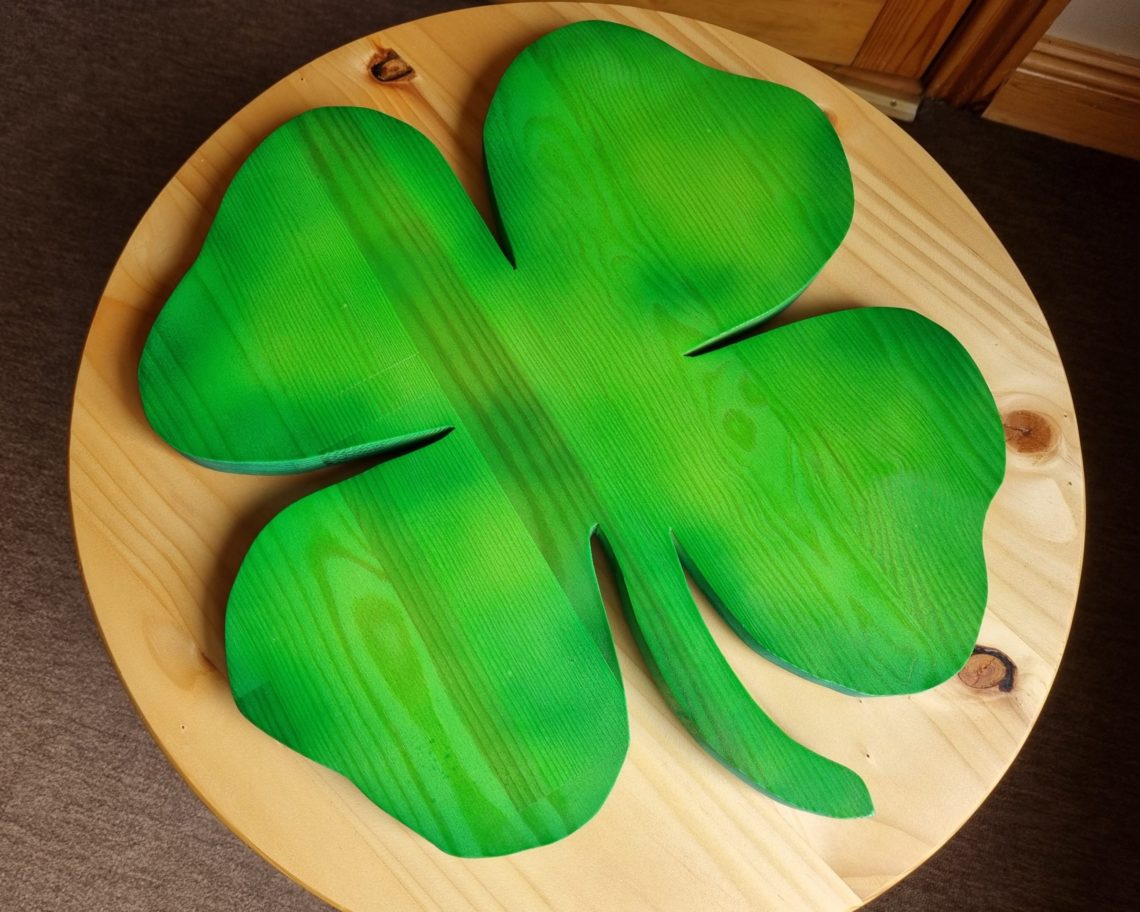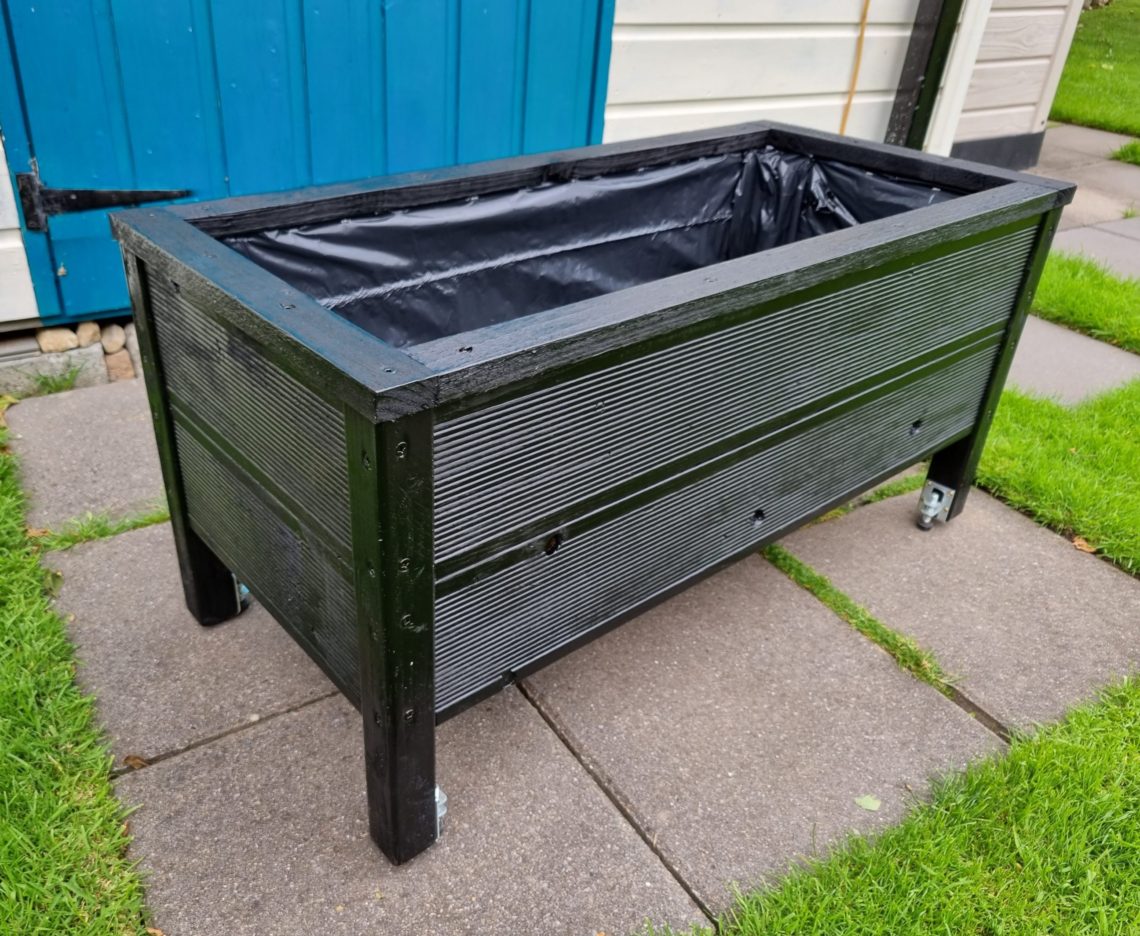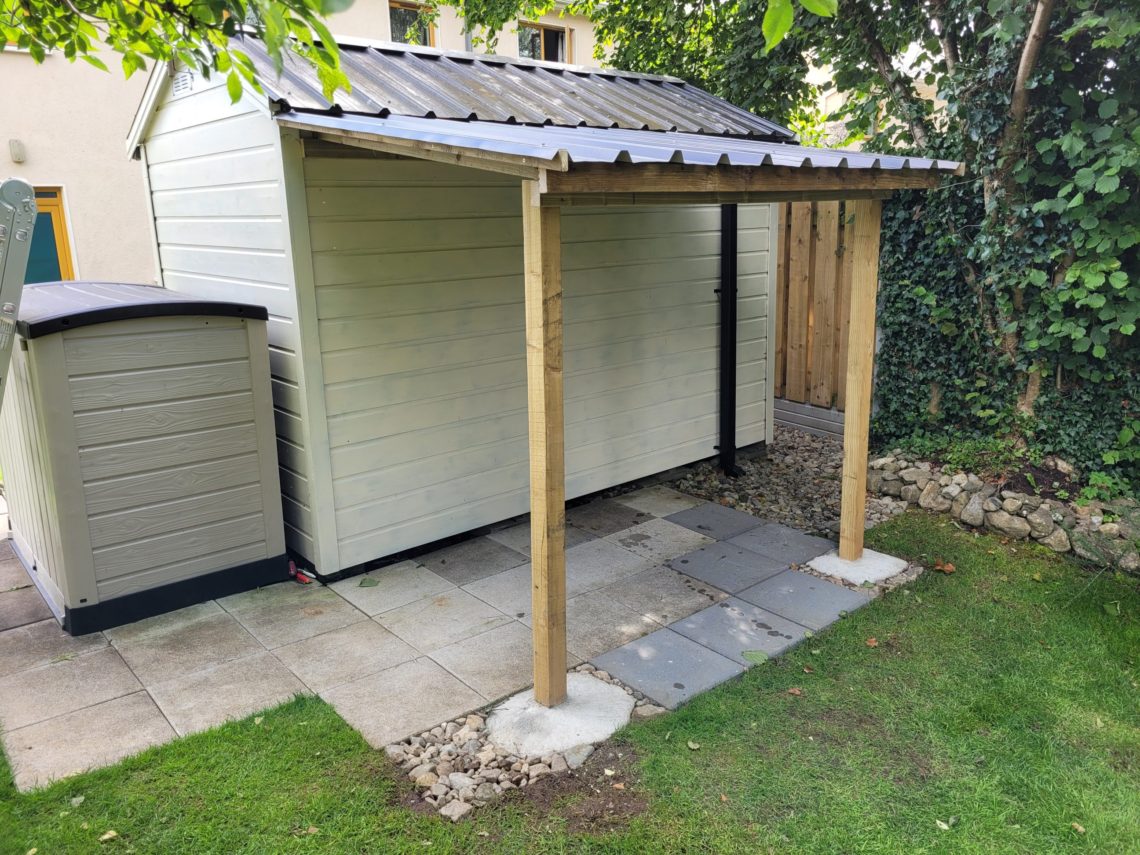-
Ribbon tree
This project can be identified as a Christmas decoration, but it doesn’t have to. Surely, it looks like a ribbon winding around a tree and when used with LED lights it obviously brings Christmas to mind. However, for those who enjoy working with wood, it can simply be seen as a representation of a tree, symbolising the source of timber. It has the flexibility to be both, transcending the boundaries of a specific interpretation. Essentially, it is a form of art, open to diverse perceptions from individuals. Even when dressed with lights, it can function as a lamp, devoid of…
-
Clover
Shamrock and clover are not the same, although they are often used interchangeably to symbolise luck or Ireland. Personally, I view the three-leaf shamrock as more of a religious symbol because, in Christianity, the three leaves represent the Holy Trinity. On the other hand, the four-leaf clover is considered the ultimate symbol of good luck. To avoid any religious connotations in my choice, I decided to lean towards the secular side. Anyway, the four-leaf clover has always been more elusive, and in my opinion, it embodies the concept of luck better. So, I made my decision and built the four-leaf…
-
Cooking fat trays
A few years ago I cut down a small sycamore tree that grew in my garden, it was necessary for safety reasons. I let the wood dry, processed it with the basic woodworking tools I had, and used it in a few projects. One board remained, awaiting the right moment and purpose. It was already planed and ready to go, perfectly straight, with no cup or twist. I needed a flat tray or dish for a stick of butter, with no lid to keep the project simple to make and easy to clean. The lard tray was also made in…
-
Classic crate, a practice piece
Building a lightweight but strong enough crate to store canned food, was the plan when I started making this one. Most importantly, I wanted to test out my new nail gun and explore new joinery techniques, specifically using brad nails and glue. This explains the title of this post – “a practice piece”. I needed a crate for storing kitchen items, as the one I had seemed to be too bulky and had an excess of fasteners. This new crate was the opposite of the old one, providing a much-needed upgrade. I purchased two lengths of 9 mm thick mouldings…
-
Revived wood planter
Created from reclaimed wood that was brought back to life after being discarded and left in the bushes for about 18 months. Not everything could be reused, but I managed to save a few boards that were tucked deeper in the pile and had less damage from the weather and nature. They still needed cleaning and drying, but after the prep work was done, they were fine for small outdoor projects. I checked them for staples, nails, and embedded stones, and once I was satisfied, I gave them a second chance. Most of them were decking boards and 2x4s –…
-
Coffee filter holder
A simple and quick project, put together using scrap materials and finished with leftover paint. Thanks to the good weather, both the glue and paint dried quickly, speeding up the project’s completion. This fast turnaround offered a nice change from my usual more complex tasks. I was lucky to find a plywood sheet on the offcut shelf that was a perfect fit for the box, which meant less waste and less work. All the pieces were glued together with the better side facing inward, and the outside was given a bit of wood filler before being painted. I used the…
-
Plywood box with moulding-covered edges
The body of the box was crafted from five plywood panels, simply butt-joined and secured with glue and nails. This approach proved to be both quick and effective, providing ample strength for its intended purpose. To enhance the aesthetic appeal and user-friendliness of the box, I covered the sharp corners and exposed plywood edges with tasteful mouldings. The time I saved by simplifying the plywood body construction was redirected towards experimenting with novel techniques for addressing a common issue with cheap plywood – its often imperfect and void-ridden edges. While numerous methods remained unexplored for future projects, I opted for…
-
Lean-to roof
Probably the biggest project I’ve ever undertaken, both in terms of dimensions and cost. I had to acquire new skills and familiarise myself with new terminology, but fortunately, I already had most of the necessary tools in my workshop. I was aware that constructing a sturdy frame could pose a challenge, but it had to be done correctly. It needed to strike a balance between solidity and visual lightness, complementing the shed it was going to be attached to. Maintaining visual consistency between the existing structure and the new addition was one of the key objectives. Additionally, the lean-to had…
-
Mini shipping crate
It’s built very similar to a full-size shipping crate but due to the size of the parts, it’s glued together and not nailed. Most importantly, each side is made of plywood and is reinforced with timber braces but also, the original idea of built-in forklift slots somehow remains. I made many of these full-size shipping crates in my day job and was always impressed with the simplicity of their construction and the way they were put together. Just nails, screws and exposed plywood edges – I wanted to recreate a box like this, just scaled down but using a similar…
-
Fruit fence
This simple fence was built to prop up laden blackcurrant branches and to keep them off the ground. The bush was growing in every direction, towards the greenhouse, through the property fence and it was taking up an unnecessary amount of space. The fence I built solved all these problems and brought a breath of fresh air into that corner of the garden. It looks rustic yet professional and the bush seems to be under control and well looked after. The job was straightforward and fun, I generally love making garden projects because of all the benefits of sunshine and…









